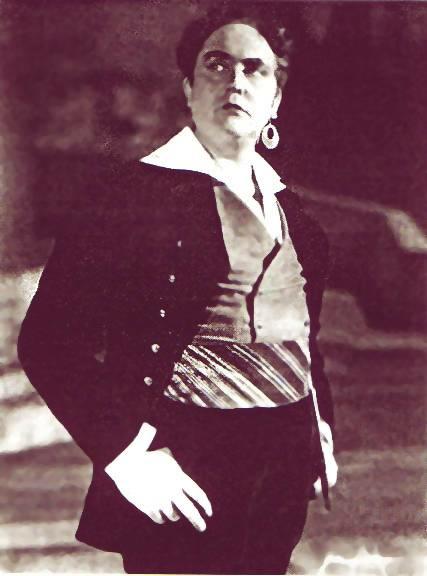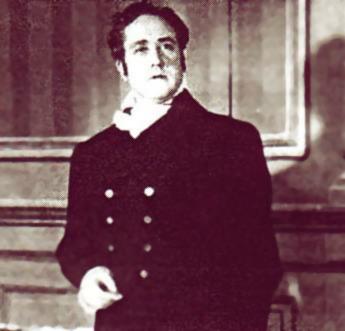Stefán Íslandi
6 October 1907 Skagafjord (as Stefán Guðmundsson) – 1 January 1994 Reykjavik
Turiddu
Lenski
Rigoletto
In RA format
He was born into a poor working-class family in northern Iceland. His father drowned when Stefán was 10 years old,
whereupon he was placed with foster parents. After his voice broke, it developed into a lovely tenor that became locally
well-known. When he sang at a private reception, a ship owner from Reykjavik heard him, and convinced him to move to the capital
city for vocal studies.
So in 1926, he went to Reykjavik, where he worked, among other jobs, as a barber apprentice and took voice lessons. In 1929, he
became a choir soloist, plus he sang in cinemas and on the radio. The owner of Kveldúlfur, Iceland's largest shipping and
fishing company, sponsored his further vocal studies in Milano, with Ernesto Caronna (1929–33).
Since Guðmundsson was unpronounceable for Italians, he adopted the name Íslandi for his 1933 debut in Florence as
Cavaradossi. He had good success in Italy, but left in 1935 because of healthy reservations about the Fascist regime.
For the next few years, he sang a lot in Iceland and on tour (also abroad) with a male choir from Reykjavik; he made guest
appearances in Germany, Sweden and Hungary, and in 1938 in Copenhagen (as Pinkerton). This was where he would spend most of his
career – he stayed in Copenhagen, partly as a regular guest and partly as a member of the troupe, until 1964. From 1940 to
1949, he was married to Danish contralto Else Brems.
He also returned regularly to Iceland to appear both in concert (including a US-and-Canada tour with "his" Reykjavik choir in
1946), and in opera; at the inauguration of the new Reykjavik opera house in 1951, he sang Duca. In the 1950s and 1960s, his
performances were sporadic due to ill health.
He moved back to Iceland in 1966 and taught voice.
Reference 1, reference 2: Kutsch & Riemens
Repertory
Tosca – Firenze, Dante, 12 February 1933
Madama Butterfly – Monza, Ponti, April 1933
La bohème – Torino, Chiarelli, September 1933
Rigoletto – Montecatini
La traviata – Savona, July 1934
Carmen – Copenhagen, Royal, 26 December 1939
Les pêcheurs de perles – Copenhagen, Royal, 28 April 1942
Cavalleria rusticana – Copenhagen, Royal, 9 February 1945
Don Carlo – Copenhagen, Royal, 19 February 1948
Faust – Copenhagen, Royal, 14 May 1950
Evgenij Onegin – Copenhagen, Royal, 7 December 1951
Werther – Copenhagen, Royal, 20 October 1957
Pagliacci
Il barbiere di Siviglia
Don Pasquale
Manon
Reference for the repertory: The Record Collector, March 2010. This comes from an article written by the daughter of the
tenor. The information regarding Copenhagen has dates and more information, while the information regarding Italy is pretty scarce regarding dates
and places, even some operas have no dates at all.
I would like to thank Thomas Silverbörg for the recording and pictures.
|


